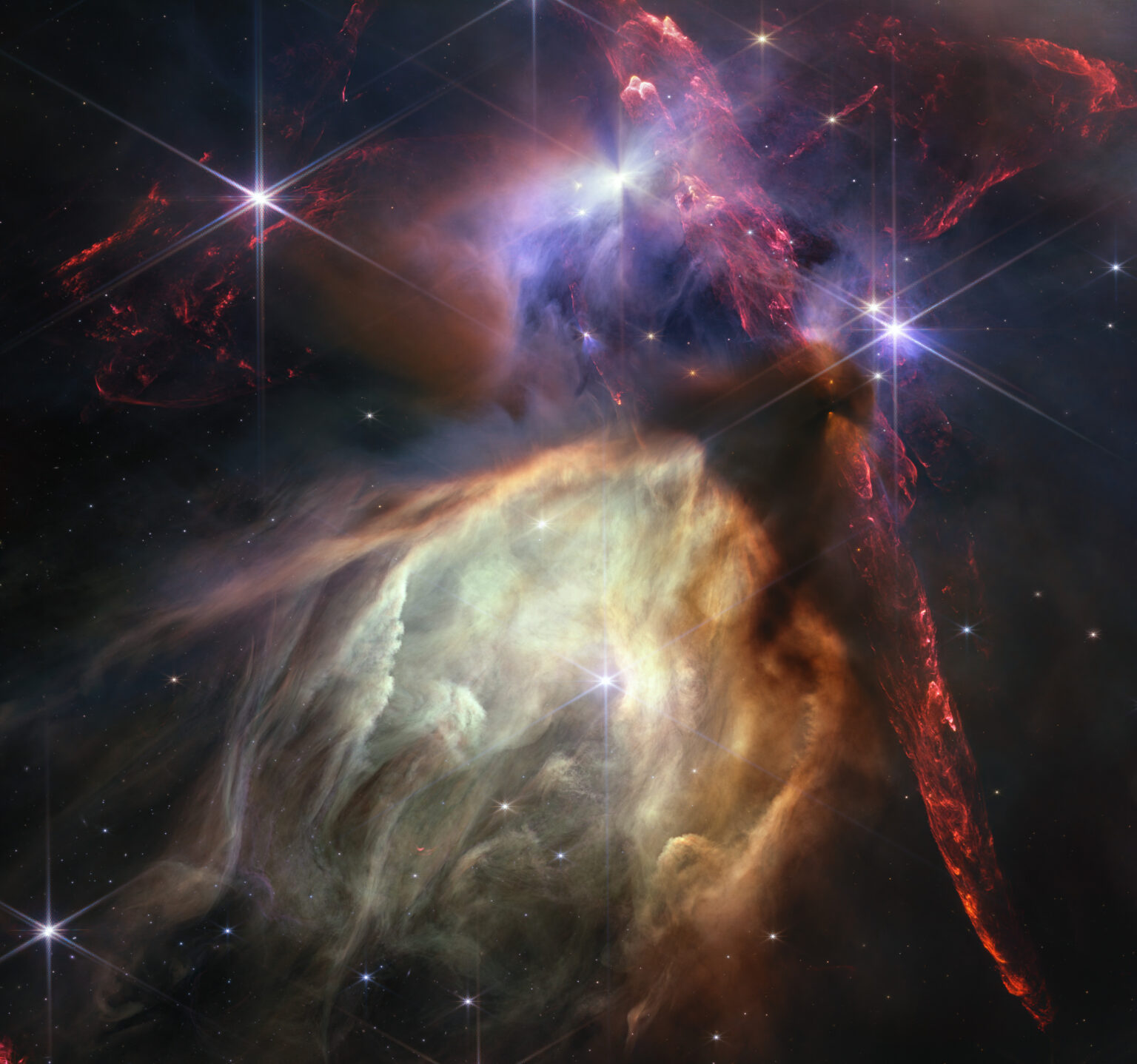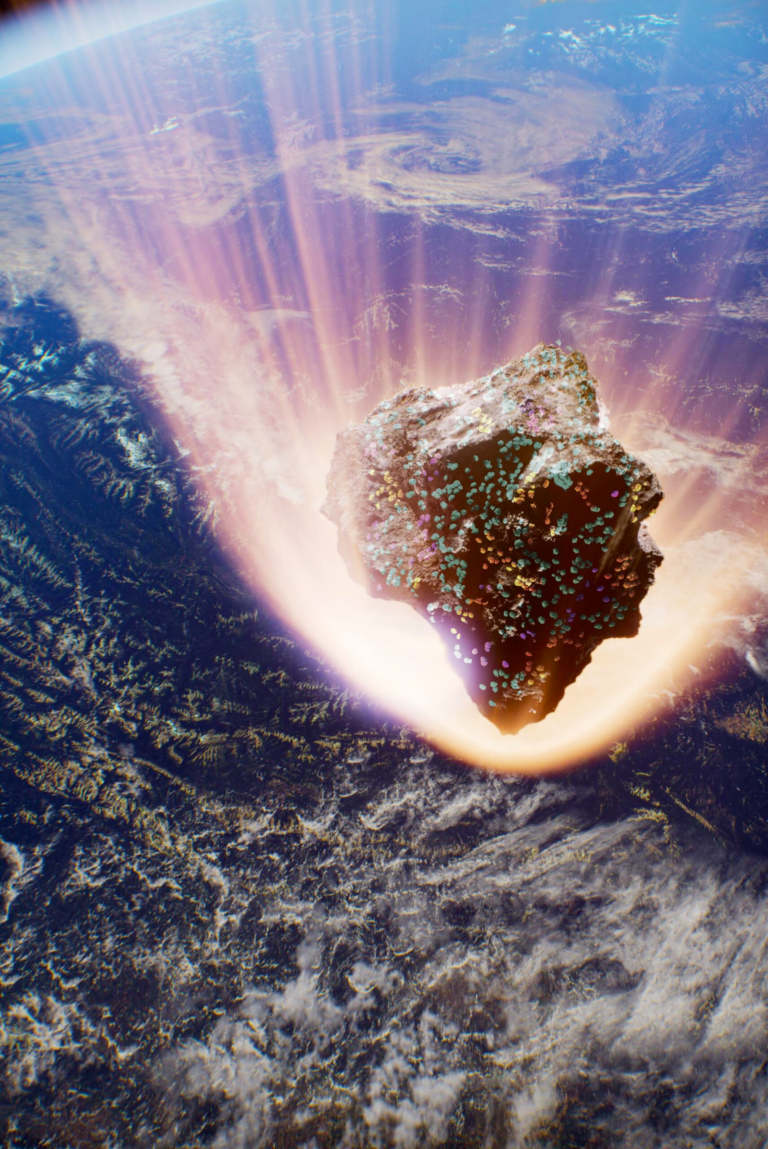Selection of the most interesting space news for the week: Scientists have discovered a mirror world with metallic clouds; a lot of organic matter has been found in the Martian Jezero crater, and we are telling what bacteria can survive in space.

“Discovery consists of looking at the same thing as everyone else and thinking something different.”
― Albert Szent-Gyorgyi
Mirror Planet: Astronomers find a world with metallic clouds
After analyzing the data collected by the Cheops space telescope, astronomers have discovered a giant cosmic “mirror”: an ultra-hot exoplanet with metallic clouds that reflect most of the starlight.
Planets and their moons do not shine with their own light, but with light reflected from their surface. For example, the Earth reflects over 30% of sunlight. It is worth saying that most planets in general have a low albedo, either because they have an atmosphere that absorbs a lot of light, or because their surface is dark. The record holder is Venus, which has a powerful cloud cover reflecting about 75% of the sun’s light.
In 2020, the TESS space telescope discovered a new exoplanet, which received the designation LTT9779 b. It is an ultra hot Neptune. Its radius is 4.7 times, and its mass is 29 times greater than the radius and mass of the Earth. LTT9779 b makes one orbit around its star in just 19 hours. According to the Spitzer telescope, its daytime side is heated to a temperature of 2000 °C. It reflects about 80% of the light of its star, which indicates that it has a very powerful cloud cover consisting of a mixture of silicates and various metals, like titanium. In fact, they play the role of a giant mirror reflecting most of the starlight.
The flow rate of rivers on Titan turns out to be very similar to Earth’s
Saturn’s moon Titan is of common scientific interest: world can boast riverbeds similar to those that flow on our planet. Rivers still flow on the surface of the planet, but not from water, but from liquid methane and ethane. It is of scientific interest because it can reveal the role of rivers in shaping the planet’s environment and suggest where to look for life beyond Earth. “The flow rates in the rivers we studied on Titan may be as large as in big rivers on Earth, even though Titan is smaller than Earth,” Perron said.
Titan’s maps have revealed an amazing world full of massive sand dunes, methane rains and hydrocarbon seas. Although Titan is alien in many ways, it has an atmosphere, flowing rivers and seas, which makes it surprisingly similar to Earth.
Satellite will search for fish poachers by radio signals
The HawkEye 360 satellite operator has signed an agreement with the Australian government to help combat illegal fishing. Their orbiters are designed to track radio signals on the Earth’s surface. HawkEye 360 demonstrated its capabilities at the very beginning of Russia’s large-scale invasion of Ukraine. Then it was its devices that helped to determine that the aggressor’s troops had jammed GPS signals in Belarus before the attack.
In total, the company now has 21 satellites in orbit. They are combined into triples that move together to form a triangle configuration. This configuration allows them to determine not only the exact position of its source on the surface by the delay of the signal, but also to characterize it. Comparing their data with the signals received by tracking systems, specialists will calculate vessels that for some reason hide their location. It is likely that they are engaged in some kind of illegal activity.
Revolutionary discovery on Mars: The Jezero crater is everywhere covered with organic matter
Materials found in the rocks of the Martian Jezero crater indicate a wide distribution of organic matter on the Red Planet. Spectroscopic analysis carried out using instruments on board the Perseverance rover detected signs of hydrocarbon molecules in various rocks. Moreover, the detected molecules differ in quantity and type in different rocks. “We have detected signals consistent with aromatic organic molecules in multiple rocks in the Jezero crater floor. We see at least four different types of fluorescence signals and three types of Raman signals that are possibly organic,” said astrobiologist Sunanda Sharma from the California Institute of Technology, who led the research.
New technique allows scientists to study objects under the surface of the ice
Scientists have proposed a new radar technique that allows them to see objects under the upper layers of ice. They tested it on the Arctic glaciers of Devon Island, and now plan to use it to study Jupiter’s moon Europa, which is covered by an ice crust. Scientists are convinced that it is not solid, but has many channels and pockets inside. However, it has not been possible to investigate them yet. However, the Europa Clipper spacecraft is due to launch by 2024. It will carry a pair of radars, on which it will be possible to apply new technology. Thus, scientists want to learn more about this distant world.
Photo of the week

In honor of the first anniversary of the launch of the James Webb telescope (JWST), NASA and ESA have published its new colorful image. The image shows one of the closest stellar maternity hospitals to Earth. In the JWST photo, you can see the molecular cloud of Rho Ophiuchi. It is located at a distance of 390 light-years from Earth and is a dark nebula with inclusions of ionized hydrogen regions. It owes its name to a bright star that is part of this complex.
Interesting figure — 400 thousand years ago

The data obtained by the Chinese Zhurong rover and the Tianwen-1 orbiter showed that longitudinal Aeolian ridges were formed on the surface of the Martian dunes several hundred thousand years ago at an unusual angle. This indicates that the climate of the planet was changing a lot at that time. In general, Tianwen-1 explored 2,262 dunes of light material all over Mars. Based on the number of craters from meteorites formed on them before the longitudinal Aeolian ridges began to form, scientists determined their age. It turned out to be in the range from 2.2 million to 400 thousand years. This means that around this time, the climate on Mars changed dramatically.
Something to read on the weekend

Sometimes we don’t even realize that some earthly creatures are capable of surviving in space. We’re accustomed to considering our planet as an isolated oasis teeming with life, where constant evolutionary processes take place, new species emerge. And life beyond its boundaries seems impossible. However, is it true? UST tells about how bacteria tolerate conditions close to space ones.
Follow us on Twitter to get the most interesting space news in time
https://twitter.com/ust_magazine
